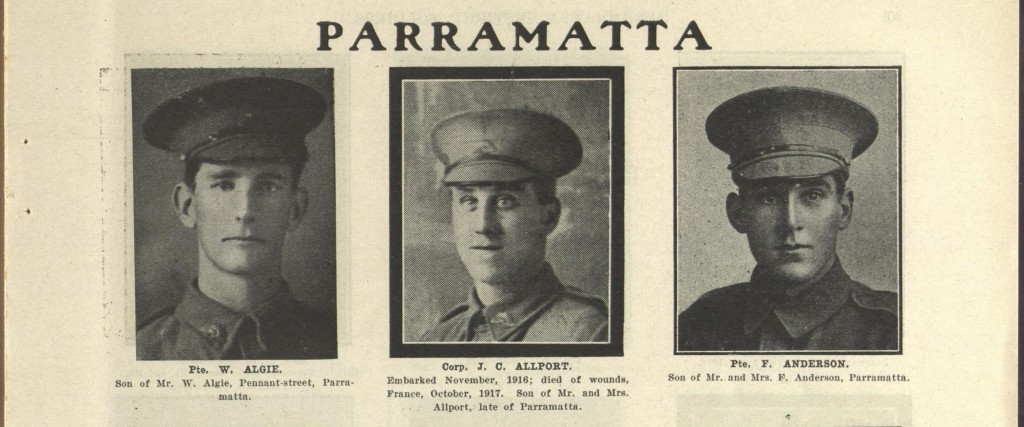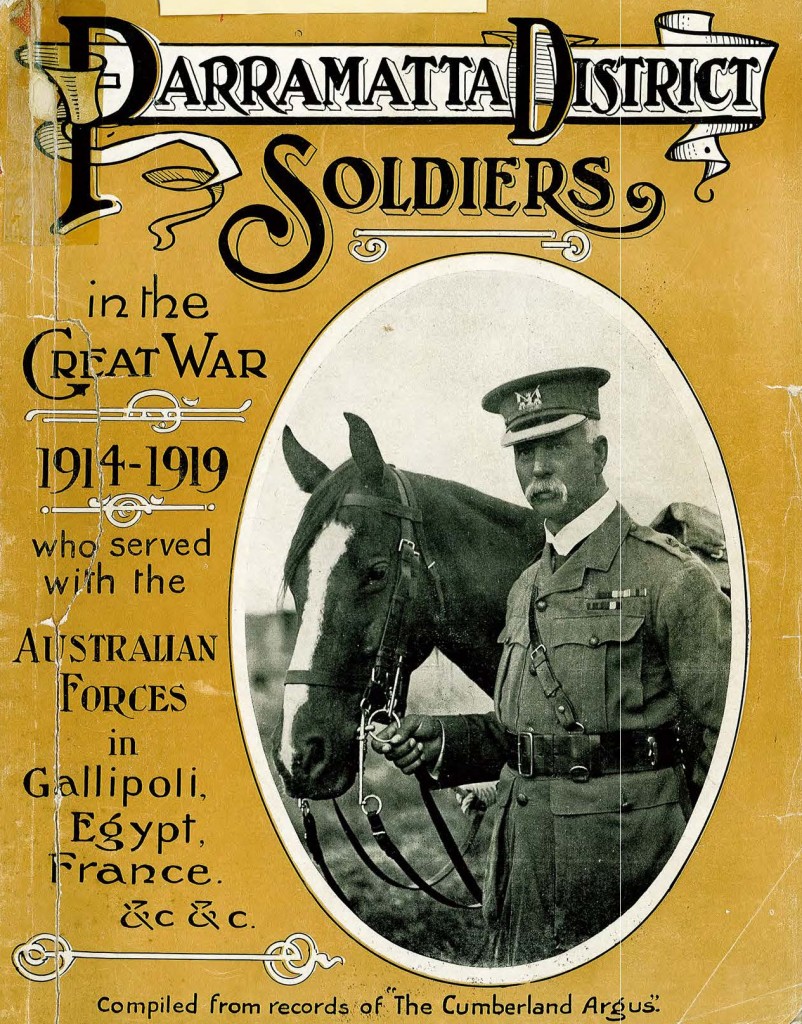
In early 1919, a notice to “Parents of ‘Our Boys’ and the Boys themselves”, appeared in the pages of The Cumberland Argus and Fruitgrowers Advocate. The notice, placed in the newspaper by the Cumberland Argus, asked parents and soldiers to send photographs and basic personal details of those from the district who served in the Great War. The newspaper was preparing a book containing nearly 2000 photographs as a souvenir of the great part played by soldiers from the district who fought in the Great War. The book, nicknamed the “Argus War Book”, was a huge and challenging undertaking that took The Cumberland Argus over 20 months to complete.
Parramatta and District Soldiers who fought in the Great War, 1914-1919, was released on Armistice Day 1920. It was dedicated “to the gallant soldier boys of Parramatta and these districts: to the glorious memory of those who have made the great sacrifice: to those who have returned to enjoy the noble country they have helped to save: and to their relatives and friends whose hearts thrilled as they followed their magnificent exploits.”
The Cumberland Argus not only produced a remarkable book, but also created historical resource of long term value and interest, that in the future descendants and researchers could find a ready answer regarding an individual. From the outset, The Cumberland Argus saw this book as a “possession forever – a monument more enduring than brass or marble.”
The book begins with a foreword by Lord Jellicoe, Admiral of the Fleet, followed with an article by Sir Joseph Cook, Parramatta’s MLA, who added to the historic events of Parramatta when he signed the Peace Treaty of Versailles. Parramatta’s favorite, “Fighting Charlie,” Brigadier-General Charles Cox, provided a condensed history of the expedition to Palestine and other places, in which the Australian Light Horse, under his command, played a part.
Following a number of other articles the principal part of the book begins. From page 29 to page 254 pictures of soldiers are arranged alphabetlcally according to the part of the district to which the men belong. Beginning with Parramatta, Granville and Clyde, Auburn, Lidcombe the book continues to include Liverpool, Marsden Park, Ingleburn, Hoxton Park, Cecil Park, Cabramatta, Canley Vale, St. John’s Park, Smithfield, Fairfield, Wetherill Park, Bossley Park, Guildford, Merrylands, Westmead, Wentworthville, Toongabbie, Seven Hills, Blacktown, Prospect, Plumpton, Schofield’s Siding, Sackvllle, Eastern Creek, Rouse Hill, Arcadia, Baulkham Hills. Castle Hill, Dural, Galston, Glenhaven, Glenorie, Kellyville, Kenthurst, Carlingford, Dundas, Ermington and Rydalmere, Waitara, Hornsby, Normanhurst, Thornlelgh, Pennant Hills, Beecroft, Cheltenham, Epping, Eastwood, Ryde, Meadowbank and Gladesville.

A section of a page from the book. Brief biographical details accompanied each soldier. A thick black border around a portrait indicated the individual had died while in service.
The Miscellaneous Section of the book contains portraits received too late for inclusion under the suburbs, together with groups and views of places well known to the service men.
Also commemorated are organisations which played a role in supporting the war effort, including the Parramatta Branch of the Red Cross Society, the Parramatta Voluntary Aid Detachment, the Fairfield and the Granville Red Cross Workers, the Parramatta War Chest Society, the Parramatta Citizens Welcome Home Association, the Soldiers’ Wives and Mothers’ Centre, the Army Medical Corps, and the Nursing Sisters sent from Parramatta.
Ninety-six years since the book was published it has proved itself to be of great and lasting historical value. The Parramatta Heritage Centre has recently digitised the book, extracting the portraits of soldiers and nurses and progressively complimenting each portrait with biographical information sourced from the Australia War Memorial, National Archives of Australia and newspaper articles. As what could be seen as a continuation of the work started by The Cumberland Argus, the Heritage Centre has loaded 1500 soldiers and nurses names with images into a touch table. This is being done as a part of the 100 year Commemoration Ceremonies marking the start of the war in August 1914. While all the soldiers listed include a portrait, name and location we have only completed biographical entries for the first 350 soldiers.
You can view a copy of the book here
References
To Parents of ‘Our Boys’. (1919, March 19). The Cumberland Argus and Fruitgrowers Advocate, p. 1. http://nla.gov.au/nla.news-article86116068
“The Argus” War Book. (1920, November 20). The Cumberland Argus and Fruitgrowers Advocate, p. 6. http://nla.gov.au/nla.news-article103256626




